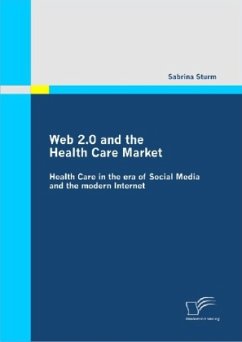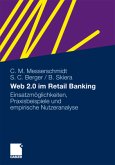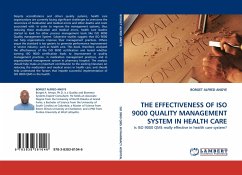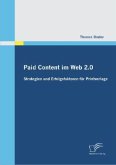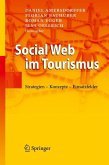The present piece of research deals with the use of Web 2.0 applications within the health care market. When reviewing literature it became evident that up to now, research which has been conducted in this field is rather limited to single aspects of the topic. Comprehensive research investigating the topic as a whole could not be properly identified. Within this study, first of all, Web 2.0 is introduced in general, including a definition, its principles, as well as major supportive technologies and common applications, for example blogs, communities, virtual worlds and podcasts are outlined in detail. Since Web 2.0 is a rather young phenomenon, experts have not yet agreed on a common definition and scope. Therefore this part is intended to provide a basis for common understanding about Web 2.0.
The second part is dedicated to the health care market itself. Here, a definition and classification of the market is provided. In this context it has been specified what has been included into its scope for the purpose of this study. Moreover, it is given an overview of current trends, the status quo, as well as an outlook to future development with respect to influencing factors like demographic changes, medical-technological progress, as well as political interventions. It is important to consider the structure and future development of the health care market in order to properly assess the value of Web 2.0 for this market.
Afterwards, Web 2.0 is introduced to the health care market, thereby setting it into the context of e-health, the increasing virtualization and other related terms like Medicine 2.0 or Patient 2.0 . Subsequently, possible applications and their value are discussed for the different stakeholder groups that have been identified as health care consumers, health care providers, and health care payer. It is depicted in depth which benefits can be obtained from the single applications. Majorly, it turned out that patients may have greatest benefits in the fields of information search and interaction with like-minded people, while health care providers may use such applications for collaboration and exchange of professional information in the majority of cases. Health care payers might draw greatest benefit in the field of customer-tailored marketing, as well as customer interaction and education. Afterwards, the common advantages and disadvantages that are valid for all health-related Web 2.0 applications are discussed. Here it is positively pointed to cost reduction and revenue increase effects, efficiency and quality gains, as well as patient empowerment on the one hand and negatively pointed to data quality and reliability issues, data security and protection, as well as limitations to access, on the other hand. The following chapter provides an overview of the legal framework for Web 2.0 applications in health care, outlining major legal difficulties with respect to general, internet-related, and health-related laws and regulations. The penultimate chapter gives an insight into the assessment of this topic in practice. Here the results of the conducted expert interviews are presented, lighting this topic from an individual perspective. To finalize the research work a conclusion will be given, including a future outlook.
The second part is dedicated to the health care market itself. Here, a definition and classification of the market is provided. In this context it has been specified what has been included into its scope for the purpose of this study. Moreover, it is given an overview of current trends, the status quo, as well as an outlook to future development with respect to influencing factors like demographic changes, medical-technological progress, as well as political interventions. It is important to consider the structure and future development of the health care market in order to properly assess the value of Web 2.0 for this market.
Afterwards, Web 2.0 is introduced to the health care market, thereby setting it into the context of e-health, the increasing virtualization and other related terms like Medicine 2.0 or Patient 2.0 . Subsequently, possible applications and their value are discussed for the different stakeholder groups that have been identified as health care consumers, health care providers, and health care payer. It is depicted in depth which benefits can be obtained from the single applications. Majorly, it turned out that patients may have greatest benefits in the fields of information search and interaction with like-minded people, while health care providers may use such applications for collaboration and exchange of professional information in the majority of cases. Health care payers might draw greatest benefit in the field of customer-tailored marketing, as well as customer interaction and education. Afterwards, the common advantages and disadvantages that are valid for all health-related Web 2.0 applications are discussed. Here it is positively pointed to cost reduction and revenue increase effects, efficiency and quality gains, as well as patient empowerment on the one hand and negatively pointed to data quality and reliability issues, data security and protection, as well as limitations to access, on the other hand. The following chapter provides an overview of the legal framework for Web 2.0 applications in health care, outlining major legal difficulties with respect to general, internet-related, and health-related laws and regulations. The penultimate chapter gives an insight into the assessment of this topic in practice. Here the results of the conducted expert interviews are presented, lighting this topic from an individual perspective. To finalize the research work a conclusion will be given, including a future outlook.

